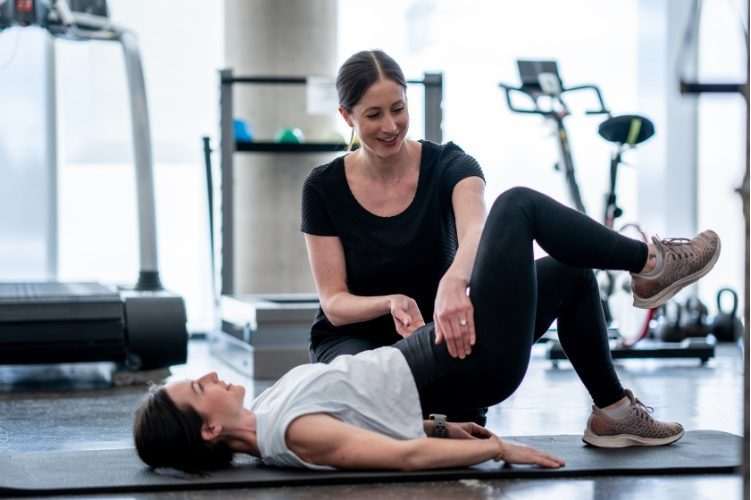The pelvic floor is part of your core system. Here’s how they support posture, movement, and stability.
When people talk about “core strength,” they usually mean abs — crunches, planks, or that “flat stomach” look.
But here’s what most people miss:
Your pelvic floor is part of your core.
And if it’s not working properly, neither is the rest of your system.
At YFS (Your Form Sux), we don’t just train abs — we train the deep system that keeps your body stable, powerful, and pain-free. And the pelvic floor is a massive piece of that puzzle.
Let’s Break It Down: The Pelvic Floor–Core Connection
What Is the Core, Really?
Your true “core” isn’t just your six-pack. It’s a team of muscles that work together to:
- Stabilize your spine and pelvis
- Support your organs
- Control pressure when you lift, breathe, move, or bear down
- Keep you balanced during dynamic movement
This team includes:
- Diaphragm — your breathing muscle up top
- Transverse abdominis (TVA) — your deep abdominal layer
- Multifidus — deep spinal stabilizers
- Pelvic floor — the base of the core
👉 Think of it as a canister:
- Diaphragm = lid
- TVA + obliques = sides
- Pelvic floor = bottom
- Spine = back support
If one part fails? The whole system leaks energy (or pressure).
What Does the Pelvic Floor Actually Do?
The pelvic floor:
- Supports your bladder, uterus/prostate, and rectum
- Helps control pee, poop, and sexual function
- Works with your abs and diaphragm to manage intra-abdominal pressure
- Reacts reflexively when you move, lift, jump, sneeze, or strain
It’s not just a “women’s health” muscle — it’s a core stabilizer that affects posture, power, and performance in everyone.
How the Connection Works (In Real Life)
Let’s say you lift a heavy weight or brace during a squat. Here’s what should happen:
- You inhale → diaphragm lowers
- Pelvic floor relaxes slightly
- You exhale + engage → TVA and pelvic floor contract together
- They create stable pressure from top to bottom
This coordinated system keeps your spine protected and your movement efficient.
If that coordination is off?
- ➡️ You might leak pee when you lift or jump
- ➡️ Your low back compensates → pain
- ➡️ Your core “looks strong” but lacks true stability
- ➡️ You might develop pelvic pressure or prolapse symptoms
- ➡️ You lose power, even if you’re training hard
Signs Your Core + Pelvic Floor Connection Needs Work:
- ❗ You “brace” but still feel weak or unstable
- ❗ You’re doing core work but still have back pain
- ❗ You pee when lifting, running, or jumping
- ❗ You have diastasis recti that won’t close
- ❗ You feel pressure or bulging in your lower abdomen or pelvis
- ❗ You struggle with breath coordination during workouts
How We Fix It at YFS
At YFS, we don’t give you random Kegels or crunches.
We assess how your pelvic floor, breath, and core muscles work together — then build a plan that gets everything syncing again.
That might include:
- ✅ Breathwork and pressure management
- ✅ Core engagement drills with pelvic floor cues
- ✅ Mobility for ribs, hips, and spine
- ✅ Strengthening from the inside out
- ✅ Real-world movement coaching (lifting, running, sport)
Because you can’t out-crunch a dysfunctional pelvic floor.
And you can’t stabilize your spine without pressure control.
Final Word: Strong Cores Start at the Floor
Whether you’re postpartum, post-injury, or just trying to lift without leaking, this isn’t about vanity — it’s about function.
A connected core isn’t just about strength — it’s about timing, breath, and system-wide coordination.
And once your pelvic floor and core start working as a team, everything else gets better.
Ready to train a core that actually works?
Book a pelvic floor and core assessment at YFS Toronto — and let’s rebuild your foundation from the ground (floor) up.




